
‘Afraid of the water’? Life in a city that dumps billions of litres of raw sewage into lakes and rivers
10 billion litres of sewage are dumped into Winnipeg’s lakes and rivers each year. Some...
A new mineral claim was made in the heart of Gitxaała territory this month in a sacred area the First Nation is trying to protect. For Gitxaała Hereditary Chief Sm’ooygit Nees Hiwaas, it felt like a stab in the back.
“We’re challenging a dishonest process,” Nees Hiwaas said. Gitxaała Nation and Ehattesaht First Nation are in B.C’s. Supreme Court, fighting to change the way the province gives out mineral rights on their territories.
Right now, almost anyone can make a claim using the province’s online mineral tenure system. With a few clicks and a fee they can get the mineral rights to a plot of land. Under B.C.’s current Mineral Tenure Act, the claim holder does not have to consult or notify First Nations if the mineral claim is in their territories before exploring the area with handheld tools.
While the two First Nations are in court, new claims have been made on both their territories. The Narwhal found a new mineral claim for about 58 hectares of land was made on Lax k’naga dzol (Banks Island) in Gitxaała territory on May 2, 2023.
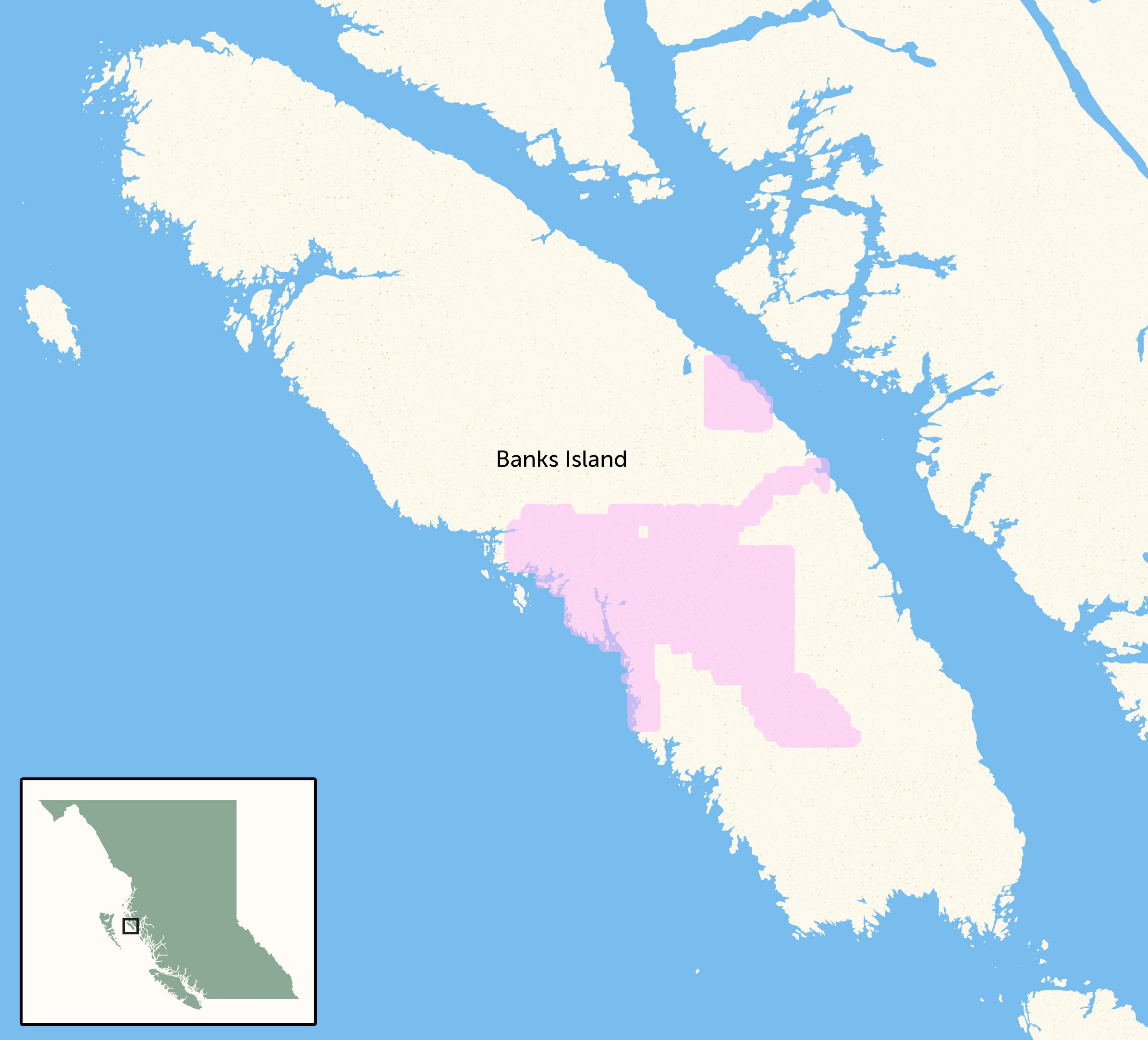
Mineral claims are also continuing in Ehattesaht territory on the west coast of Vancouver Island. As of May 2, 30 claims had been registered in or on the edges of Ehattesaht territory since Ehattesaht’s case was launched on June 9, 2022. Ehattesaht First Nation is asking the court to pause all claims in their territory until a decision is made on the case — which could take months.
The two nations agreed to have their case heard together. Over 13 days of hearings this April and May, they shared how the current automatic granting of mineral rights to their territories impacts their laws, culture and ability to use their land. They are asking for a stop to future claims without consultation and for a quashing of certain mineral claims in their territories. They are also seeking declarations that the current online system is unconstitutional and the Mineral Tenure Act is inconsistent with the United Nations Declaration for the Rights of Indigenous People. The final day of hearings is scheduled for May 19.
The case is the first legal test of B.C.’s Declaration on the Rights of Indigenous Peoples Act and could set a precedent for how the legislation is implemented. The decision could also give other First Nations an opportunity to challenge mineral rights in their territories and change the future of mining exploration in the province.
“The stabbing in the back is continuous,” Nees Hiwaas told The Narwhal, because of antiquated legislation that fails to acknowledge the province’s commitments to the United Nations Declarations on the Rights of Indigenous Peoples.
“When is it going to stop?” asked Jessica Clogg, West Coast Environmental Law’s executive director and senior counsel.
Many past court cases and B.C.’s commitments to the Declaration on the Rights of Indigenous Peoples Act set out the Crown’s duty to Indigenous people, Clogg explained. But the mineral rights process sidesteps those obligations, by excluding First Nations from decisions regarding the use of their lands. “Miners can still, with a click of a mouse, acquire exclusive mineral rights in Gitxaała’s territory,” Clogg said. “It's going on right now all around the province.”
Once a person or company gets a mineral claim to a plot of land, they instantly get the rights to the minerals in that plot. That means they can enter the land, take samples, set up tents and use handheld tools to search for possible profitable deposits. They do not need to seek consent of private landowners or Indigenous communities.
There are some restrictions to where a claim can be staked, but the process is automated through the online mineral tenure system operated by the provincial government. It costs individuals $25 and companies $500 to get a “free miner certificate” which then allows them to make a claim for $1.75 per hectare of land.
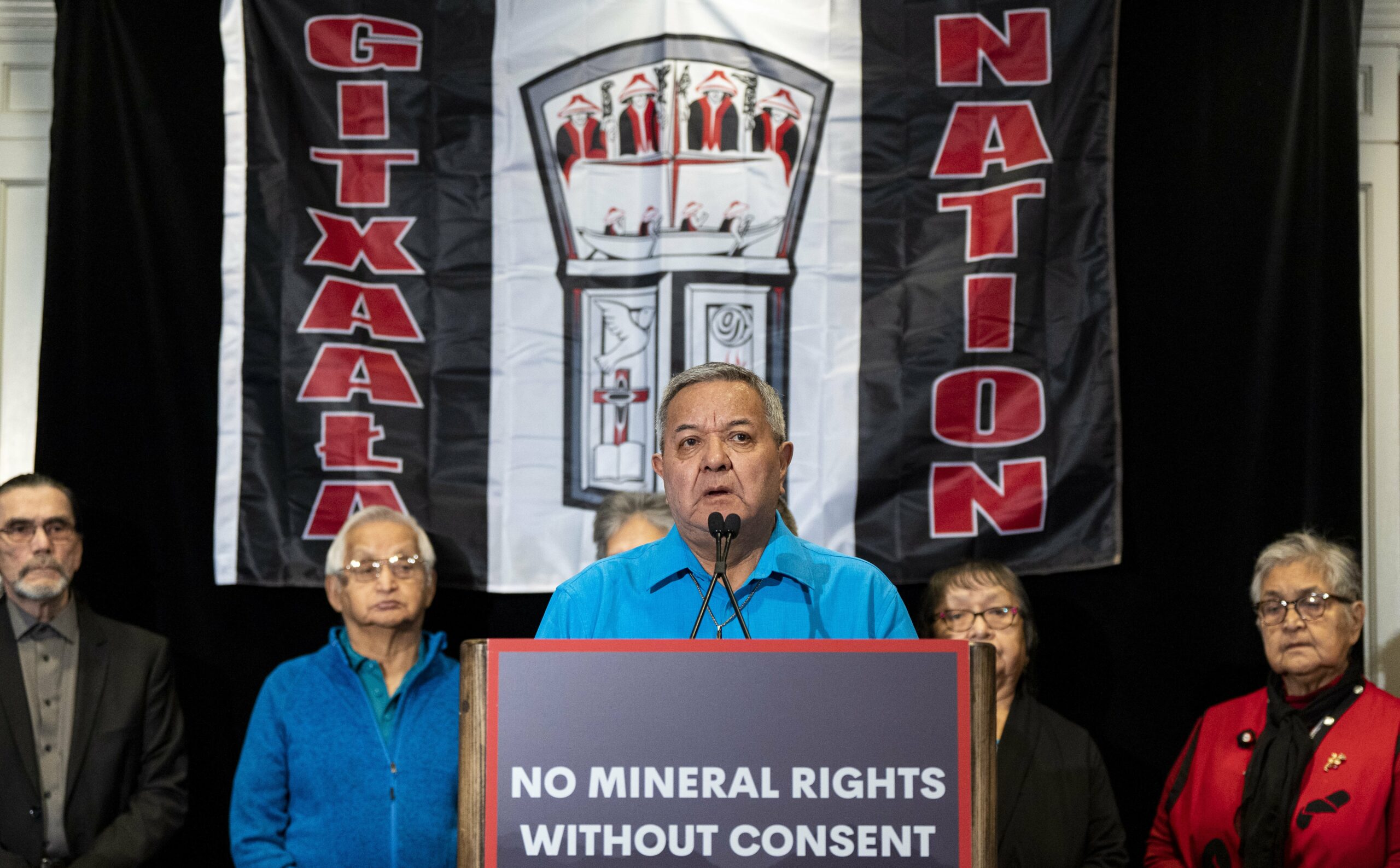
Gitxaała laws (ayaawx) govern how to live in each area of the territory.
“We have to show the utmost respect, especially to the spirit world and the land,” Nees Hiwaas said. There are important community protocols for harvesting that include preparing an offering and asking permission from spirits and ensuring the area is left in a better condition than it was before, Nees Hiwaas said.
In his affidavit, he explained how each house owns and, through its Hereditary Chief (sm’ooygit) is responsible for specific areas within Gitxaała territories. In order to access those areas or resources, permission is needed from the appropriate sm’ooygit.
“This is where our roots are,” Nees Hiwaas said. When people come and “abuse it and take what they want” it’s as if, “I go to their apartment or their home and uproot whatever I want in their household, how would they treat me? They'd lay charges against me and demand retribution. And that's just the way we feel about our territory … They're taking the food right out of the palm of our hand. The government created a way for them to do it.”
Independent prospector Marino Specogna made the claim on May 2 on Lax k’naga dzol. Specogna told The Narwhal he was aware of the court case but did not know the spot on Lax k’naga dzol he claimed was related to the case or on Gitxaała territory.
“We’re just following the rules the way they are right now,” he said. “If I didn’t do it, somebody else would.”
As an independent prospector, Specogna said he works with a few geologists in different jurisdictions. In some instances he is an agent who will make a claim and then transfer to other clients like junior mining companies.
Specogna was disciplined by the British Columbia Securities Commission in 1996 for manipulating shares of a company listed on the Vancouver Stock Exchange. He was banned from trading and acting as an officer or director for 20 years and was fined $35,000. When asked about the ban Specogna said it was a “contentious issue” from decades ago and he disagrees with the Securities Commission’s version of events.
Specogna agrees there should be consultation with First Nations, but in the current system, consultation happens after a claim is made. Because it can take a lot of investment and funds to conduct exploration activities, he believes most companies will consult before entering the area.
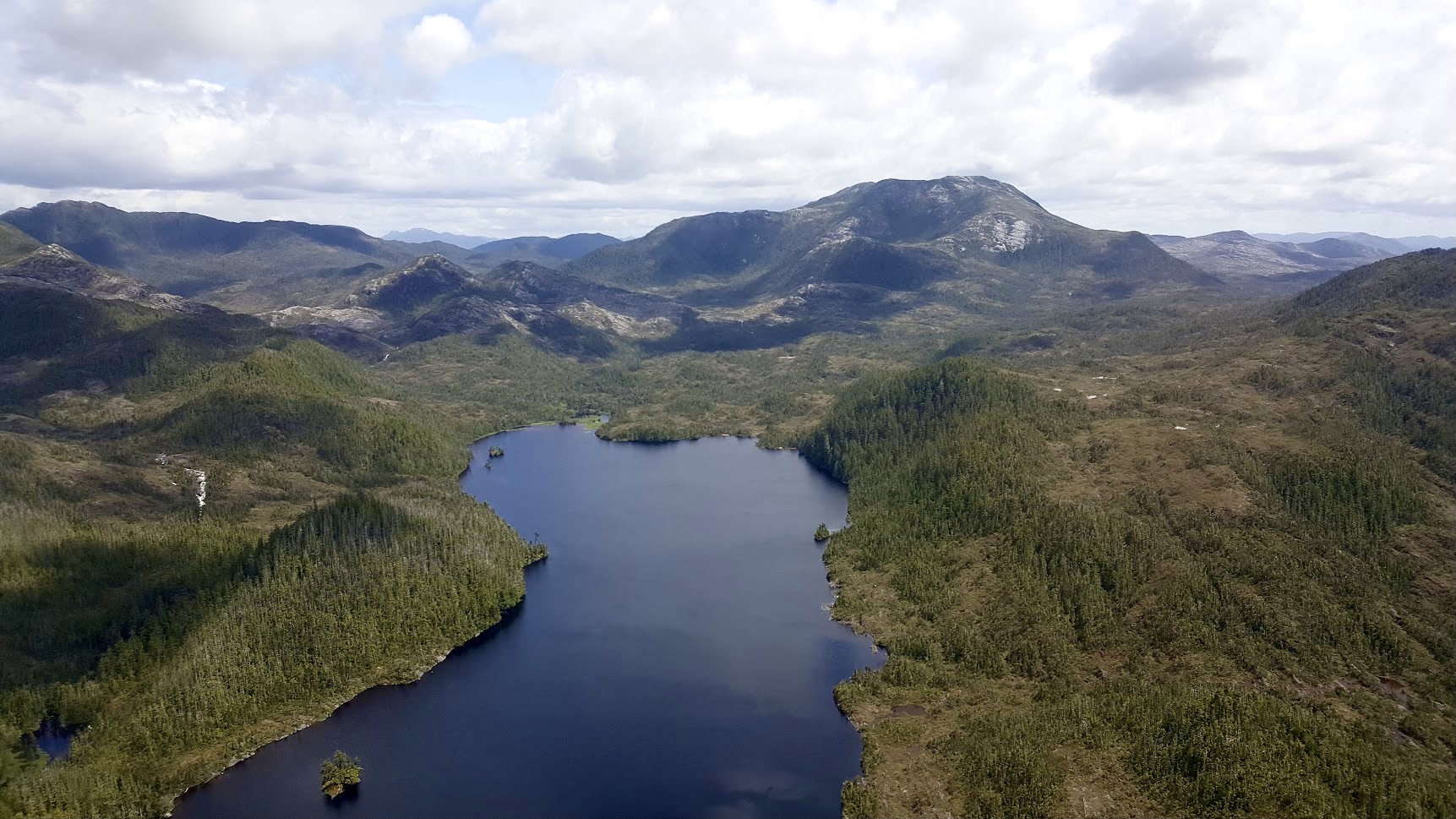
However, current regulations allow prospectors to do certain activities without permits or consultation such as digging holes with handheld tools, pitching tents and taking samples.
A big question that has been brought up, again and again, in court and by the province is that consultation with First Nations does happen in the mining and exploration process; but when does it need to happen? Should it be before a mineral claim is made or after?
Specogna is open to changing the system but is concerned independent prospectors will stand little chance against bigger mining companies in acquiring claims if consultation is required before a claim is made. “It’d probably shut out people like me,” Specogna said. If a First Nation is presented with two different proposals, one from a big mining company with a long track record and lots of funds or a smaller mining company with less resources, “most likely they will go with a big mining company's proposal,” he said.
First Tellurium, a mineral exploration junior company, is a co-intervenor with the mineral exploration consultancy Kingston Geoscience in the Gitxaała and Ehattesaht case. They support changing B.C.’s free-entry system and presented arguments to show exploration can, does and should happen with the consent of First Nations.
“You can operate with the consent of Indigenous Peoples. You can develop a business model by doing it right,” Tony Fogarassy, chairperson of First Tellurium, told The Narwhal. If a First Nation says no, “we'd want to know that sooner than later.”
When there is an area of interest in First Nations’ territory, Fogarassy said his team first reaches out to the Chief and council. They start a conversation about possible consent to explore. He said he trusts that, like any other government discussion about business, it will be kept confidential.
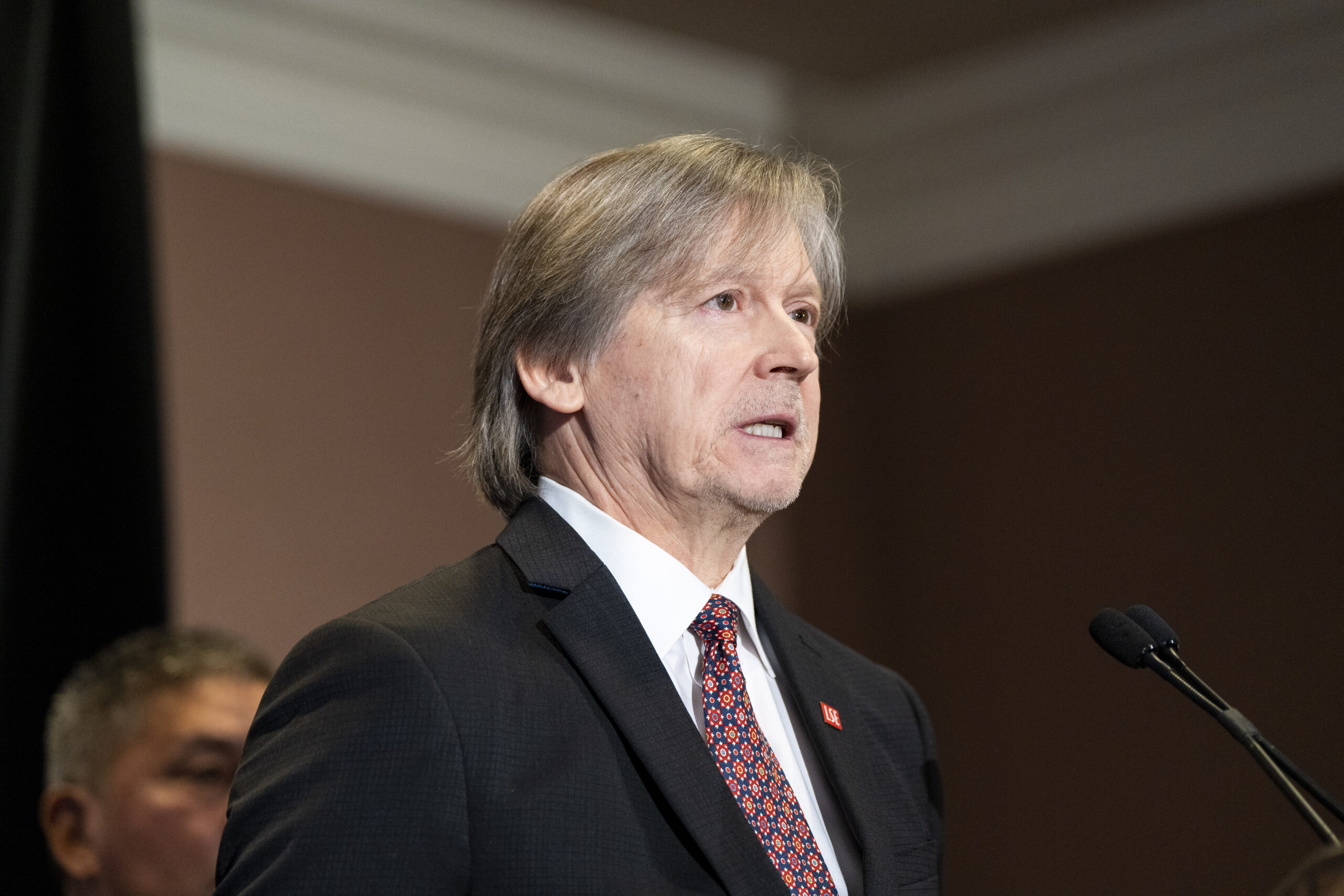
For Fogarassy, seeking consent is part of the practice. “There's no reason I can think of [not to seek consent], except for the unrelenting, unrelenting self interests of exploration and mining companies to get in as fast as possible, develop as fast as possible,” Fogarassy said.
While the industry has raised concerns around confidentiality and intellectual property being at risk if they have to share it with First Nations before making a claim, there are systems and ideas already in place to address this. One idea Fogarassy shared is something called a “mineral license” that reserves your spot as first to consult with a First Nation and get the consent to explore a certain area.
The First Nations Energy and Mining Council has also made a number of recommendations on how to reform the system including giving Indigenous governing bodies more power under the Mineral Tenure Act, requiring assessment of free-miners’ knowledge of Indigenous laws and further limiting the activities claim-holders can do.
The Initiative for Responsible Mining Assurance is another attempt to make the mining and exploration industry more transparent and reduce potential harms. The organization is led by non-government environmental and social justice groups, labour unions, mining-affected communities, mining companies and companies who use mined materials. Industry members of the initiative include Microsoft, Ford, Tiffany and Co. and Tesla.
Through a public consultation process, the organization created a globally recognized standard for responsible mining and is updating the standard to include exploration, development and processing. Companies who follow the standards can get a certification to show that their products were mined responsibly. To be certified, new mines must have obtained the “free, prior and informed consent of potentially affected Indigenous Peoples” and existing mines must seek consent for proposed changes.
Fogarassy believes that their company is following the law as it should be. “The Mineral Tenure Act is a piece of garbage,” he said, one that comes out of a colonial era.
The province recently committed to “advance the co-development of a modernized Mineral Tenure Act with First Nations and Indigenous organizations, in alignment with” the Declaration Act.
But calls for reform have gone back decades. Archives of resolutions passed by the Union of BC Indian Chiefs show multiple concerns going back to the 1970s with how the province gave away mineral rights to their territories. “The Crown has been dragging its feet and it's time for the reform to happen,” Clogg said.
In Fogarassy's opinion, “modernizing” the act isn’t enough; it needs to be repealed and replaced. “It’s a new paradigm that we’re in.”
While Gitxaała supports the reform of the Mineral Tenure Act, they plan to continue with their case. “It will be difficult to meaningfully reform the Mineral Tenure Act to align it with UNDRIP while B.C. is refusing to admit the basic problems,” Elected Chief Councilor Linda Innes said in a press release. “We cannot accept B.C.’s intention to maintain and continue to grant mineral claims in our territories in the meantime, without consent consultation.”
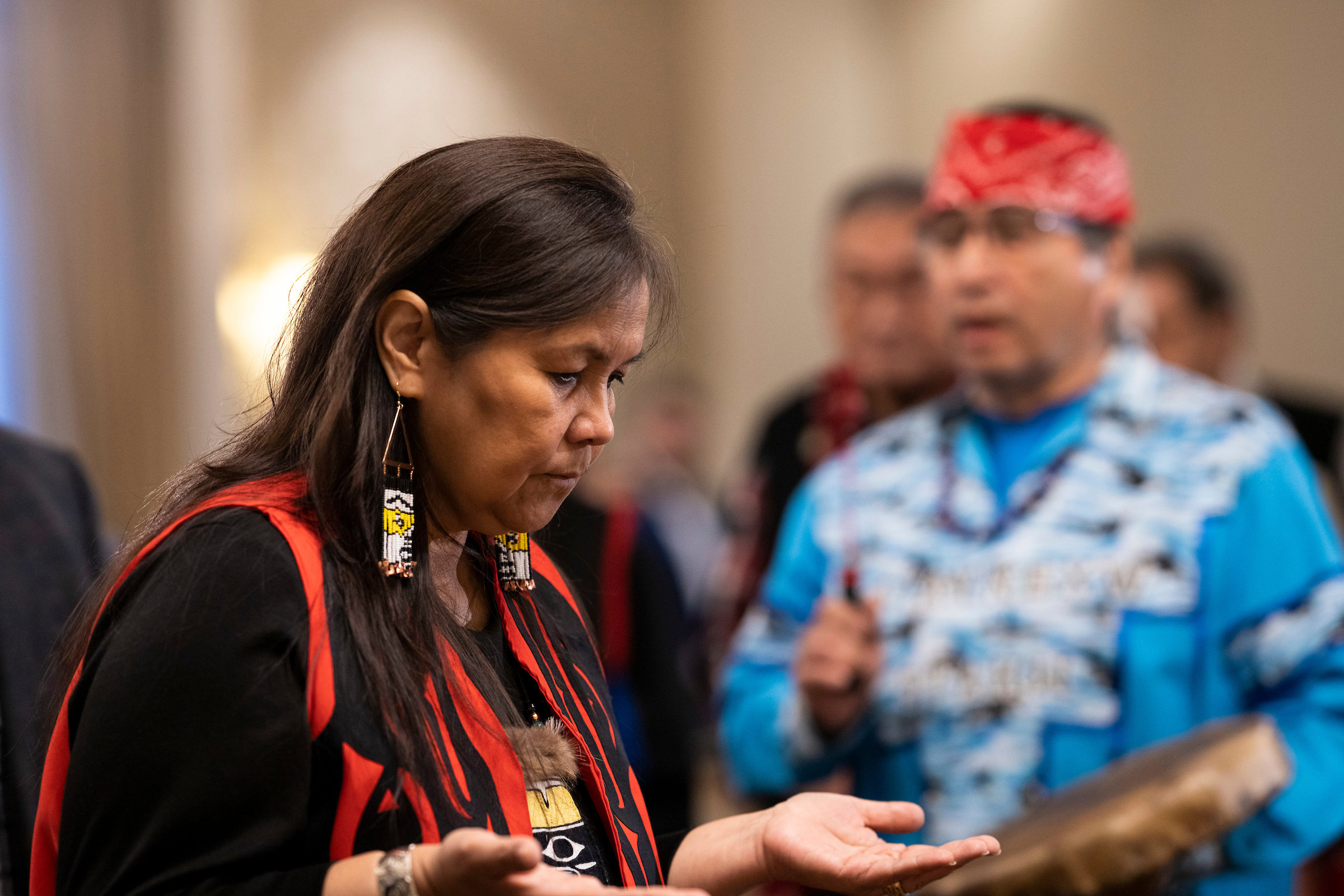
The province is trying to avoid going to court in the future as it works to fulfill its commitments to the United Nations Declaration on the Rights of Indigenous Peoples. In April, the attorney general released litigation directives for civil cases on Indigenous rights that, “prioritize and promote resolution, innovation and negotiated settlement, and to reduce the potential for litigation.” Several Indigenous leaders described the directives as a positive, overdue step towards implementing the objectives of the Declaration Act.
The province is in court arguing against any immediate changes to the current mineral tenure system and is asking for a minimum of 18 months to reform the mineral title system. With over 200 First Nations across the province and thousands of mineral claims each year, "an immediate declaration of invalidity could … cause an immediate and abrupt system-wide disruption, creating uncertainty for the mining industry and inevitable damage to the economy,” lawyers said.
In written and oral submissions lawyers for the province pointed to recent numbers from the British Columbia Geological Survey, which found spending on mineral and coal exploration grew to almost $660 million in 2021. Mining has generated a three-year annual average of close to $250 million in direct mineral tax revenue for the province, lawyers said.
While the province is citing the number of jobs and revenue the mining industry brings in, they are leaving out the cost of clean up and irreparable damages to the land, Gitxaała Hereditary Chief Nees Hiwaas said. “The damage is more than the money they make,” he said. “The people that come to do the mining are the ones that rape the land and then leave. They don't have to live with it. We have to live with it. That's what makes me sad.”
Gitxaała have occupied and governed their territories in and around Lax k’naga dzol on the northwest coast of B.C. for thousands of years. Lax k’naga dzol is described as the nation’s “breadbasket” or “table” because of its abundance of salmon, halibut, seals, deer, ducks, seaweed, giant mussels, berries and medicinal plants.
Exploration of Lax k’naga dzol started in the 60's, without the consent of Gitxaała. Eventually, Yellow Giant Mine was built and in 2015 it spilled toxic waste, causing approximately $2 million in clean up liabilities and contamination to the community’s traditional food sources. The company went bankrupt and, according to Gitxaała’s written submissions, “the site remains unremediated more than seven years later.”
The spot in and around where the most recent claim was made has ochre, an iron-rich coloured earth used to make red and yellow pigments. The colour was used as body paint for various ceremonies. The area also has salmon spawning streams that go through it.
The economic numbers shared in court were very general numbers about the mining industry and not specific to the case, Clogg said. She found it hard to hear the province argue that the administrative hassles and “overblown statements of economic benefit” of the mining industry counterbalances the harm to Gitxaała's title rights and laws "from the giving away of mineral rights in their territory."
“To some degree, it's that assumption that the economic interests of third parties or the administrative burden on the Crown can justify unconstitutional action,” she said. “The reality is that Indigenous nations have been raising the alarm about the impacts of the free entry mineral system for decades.”
Get the inside scoop on The Narwhal’s environment and climate reporting by signing up for our free newsletter. On a warm September evening nearly 15...
Continue reading
10 billion litres of sewage are dumped into Winnipeg’s lakes and rivers each year. Some...

Court sides with Xatśūll First Nation, temporarily halting Mount Polley mine waste expansion

Break out the champagne: Emma’s storied life and leadership in journalism has earned her the...
